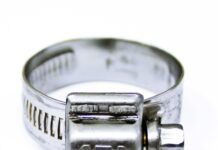You won’t find recommendations or articles from health authorities about sanitizing plumbing or drinking water equipment with vinegar because it isn’t very effective. Some bacteria and fungi like an acid pH, which is obvious since they are used to make vinegar. A moderately low pH may inhibit their activity, but it won’t kill them and as soon as the pH becomes more pleasant for them, they leap back to life.
The same goes with baking soda; a pH of greater than 10 is required for effective sanitizing and will kill all microorganisms, but baking soda solutions have a pH of 8.4 or less. Like vinegar, it will reduce their numbers, but not dramatically. But this does not mean that vinegar, citric acid and other acid cleaners do not have a place in restoring neglected potable water systems.

We’ve recommended borax-based formulations for killing and preventing the return of mildew. Some of the effectiveness derives from high pH (mildew prefers low pH) and some from its natural antibiotic activity. But borax is too toxic to use around drinking water, so scratch it off your list. It is safe for surface cleaning, fabric treatment, and skin contact, but it is forbidden in potable water systems.
Hydrogen peroxide and peracetic acid are effective sanitizing agents, often used in food processing industries, but they are highly toxic and must be thoroughly rinsed from the system prior to use. We think they are too hazardous for DIY use at the required concentrations without training.
We have recommended bleach for sanitizing potable water systems—it is the ANSI-recommended method. But it is not effective on plumbing with significant scale or biofilm build-up, because no sanitizing agent can quickly penetrate thick deposits. For this, a good acid cleaning can help.
We’ve studied many acid cleaners for their ability to remove scale, dirt, and oxidation from metals and hoses. Muriatic acid, lactic acid, and phosphoric acid are highly effective, but we would rather not use these in potable water systems, because of safety issues and the risk of damaging susceptible metals.
Vinegar and citric acid are two traditional choices for cleaning potable water systems, both in RVs, boats, hospitals, and in poultry watering systems. After a 3-6 hour soak, a 1-3% acid concentration will kill more than 85% of giardia cysts, and after 24 hours they will kill over 98%, something bleach cannot claim. The acidity dissolves their protective coat and the scale and biomass layers they are hiding under.
Don’t mix any acid with bleach, in the mistaken belief this will be a one-step miracle. The acid will cause the rapid release of dangerous amounts of chlorine gas. If you choose to follow acid cleaning with bleach sanitation (probably not needed) be certain to rinse the plumbing with copious tap water to a neutral pH before adding bleach.
White vinegar is certainly more available, but we’re recommending you give citric acid a try. It is a more effective descaling agent, in part because it is a double acid, and it has many uses around the boat (see “Passivating Stainless on Sails and Gear,” PS March 2022). It removes scale with less damage to underlying metals, you avoid the stink, and it is cheaper.
We’re not saying you need to acid wash your plumbing. If it has been well maintained, probably not. But a new-to-you boat that has been neglected, or if bleach sanitizing has not resulted in fresh water, an overnight soaking in vinegar or 3-5% citric acid could do the trick.
This was originally published on October 14, 2022 and has been updated.








































Hi Drew,
We have a 1994 90 gallon poly water tank with an unknown history, and in the 2 years we’ve owned it the water has always been cloudy, pretty disgusting looking, and we certainly don’t drink it. I’d like to try citric acid cleaning/descaling as you suggest. Is the 3-5% solution based on weight? For example, 90 gallons = 675 lb of water, multiplied by .03-.05 = 20-34 lb of citric acid powder? Yipes, that’s a lot of powder! Is this the correct way to calculate the ratio?
Thanks much,
Ron Wilander
[email protected]
For large tanks, there is no reason to fill the tank with the required acid solution. That would require a lot of acid. Instead, mix the solution in a pump-up sprayer and use that to wet the sides of the tank. Repeat several times, at about 15 minute intervals. After soaking for a few hours, pump a few gallons through the plumbing at let that soak. Finally, wash it down with a freshwater hose, refill with water, and drain again.
We have an aluminum tank and don’t put tap water into it without filtering it first due to the chlorine/aluminum reaction. How fast does that reaction take place? Would it be ok to do this acid tx then hose down straight from the hose (unfiltered), then pump it out and fill with filtered water? Or, should we stick with filtered water only? Our tank is 90 gal.
Trinta: In “Keeping Water Clean and Fresh,” re-posted July 1, 2024, we tested aluminum corrosion for tap water (1 ppm free chlorine) and a group of bleach-containing water tank treatments. Some contained additional chemicals to reduce corrosion from chlorine, which we recommended (review the article). Sodium dichlorisocyanurinate is the less corrosive form we recommend.
The reaction is very, very slow at the low concentration used. There is nothing wrong with using either bleach or weak acid cleaning solutions, at the recommended concentrations, once a year to clean and sanitize the tank; as long as they are rinsed away, the most that will happen is a superficial color change.
Obviously, by dechlorinating the water, you lose residual protection and things can grow in the tank. You want a strainer on the vent (“Strainers for Water Tank Vents,” November 2019) to keep the bugs out. A carbon block filter or similar to filter out cycsts and most of the microorganisms is also smart, since the water is not chlorinated. (See “Tap Water That is Better Than Bottled,” November 2022.)
We use ZERO WATER FILTER containers for drinking water at home and while sailing. TDS counts consistently zero until the filters wear out, then a gradual rise!